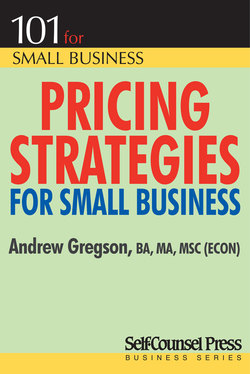Читать книгу Pricing Strategies for Small Business - Andrew Gregson - Страница 47
На сайте Литреса книга снята с продажи.
Example
ОглавлениеDuring the hot property market years in British Columbia, a kitchen design company employed the standard business model of selling an entire kitchen design, buying the cabinets, installing the cabinets, and putting a markup of a few points on the cabinets and the installation. The cabinet manufacturer demanded 100 percent of the cabinet price up front and was frequently late, especially for small customers like my client.
On first examination, it appears that the designer would have a $6,000 job profit on a $35,000 job — a 17 percent profit margin. On a job sheet or a profit and loss statement, it would be difficult to find fault with this model. However, when you considered the cash flow and the market circumstances the picture changed horribly.
First, the dollars paid to the manufacturer for the cabinets — $20,000 — came from the customer’s initial deposit. The entire customer deposit had been used to buy the cabinets.
In order to complete the job, the company had to use its own cash reserves to cover the cost of installation and design. This was a cash flow nightmare for my client. When the cabinet manufacturers did not deliver on time (a frequent occurrence); or delivered only a portion of the cabinets ordered — almost 90 percent of the time — the customers were understandably unhappy. If the customers demanded their money back — and they did — the company did not have the cash reserves to comply.
The company fought to get around this difficulty; upon completion a significant number of customers refused to pay the 10 percent holdback on the entire job — $3,500 or 58 percent of the entire anticipated profit.
The risk-return ratio was wrong for the market circumstances due to the unreliability of the cabinet makers.
In remedying this problem, the business model had to be turned on its head by unbundling the transaction and getting the profit paid first.
Initially, the customer paid the company for a kitchen design. This translated into $8,000 in revenue that paid for the design and overheads. All of the profit to be expected from this transaction was therefore paid up front, plus $2,000 for future costs.
Then the customer was introduced to the manufacturer from whom they bought the cabinets directly. Blame for late or incomplete deliveries came home to roost with the manufacturer and the designer could commiserate but never had to take the blame.
When the time came for the installation, it was paid by the customer to the company and the company paid the installer.
Even better, the design company got a sales commission from the manufacturer.
From a price point of view, the cost to the customer did not change. However, perception of added value did change. In the first place, they believed the designer was getting them the manufacturer’s best price and since they paid the manufacturer directly, they were not being “taxed” by the designer. The customer paid for performance and the designer that designed the kitchen and was paid. When the cabinets arrived, the installer was paid. Even with a normal holdback, the risk to actual profit was minor.
